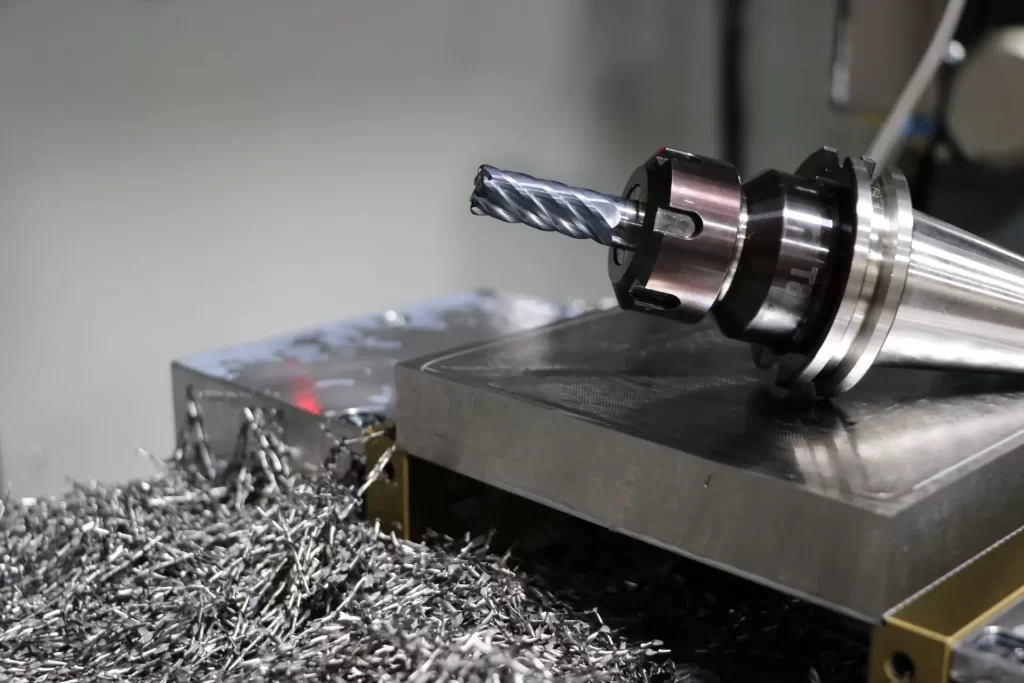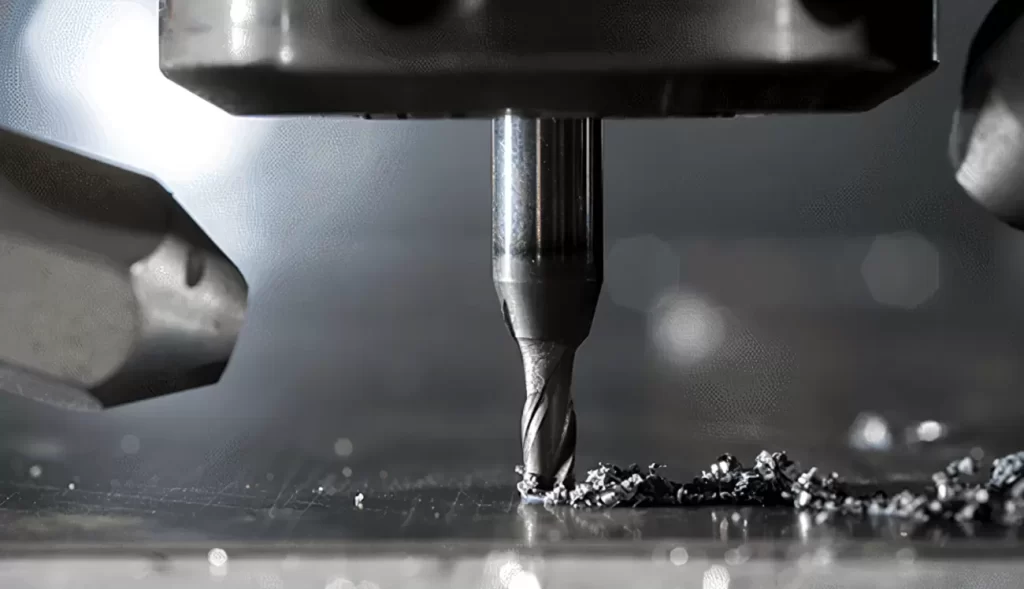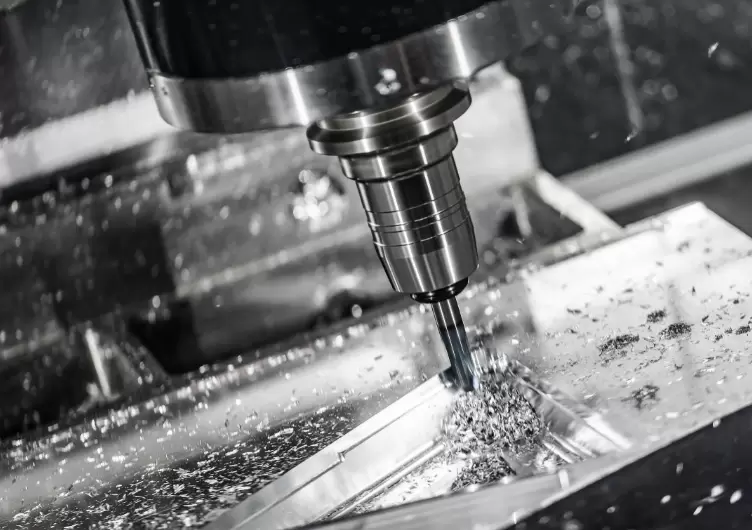Table of Contents:
- Introduction
- Properties of Titanium Alloys
- CNC Machining Techniques for Titanium Alloys
- Challenges in CNC Machining of Titanium Alloys
- Advanced Strategies for CNC Machining of Titanium Alloys
- Applications of CNC Machining of Titanium Alloys
- Conclusion
-
1.Introduction
Titanium alloys are a group of metals that have become increasingly popular due to their unique combination of high strength, low density, and excellent corrosion resistance. They are used in a wide range of applications, including aerospace, medical, and military industries. However, machining of these alloys can be a challenging task, and requires specialized techniques and equipment.
CNC (Computer Numerical Control) machining is a technology that allows for precise and efficient cutting of materials through the use of computer-aided design (CAD) and computer-aided manufacturing (CAM) software. In recent years, the use of CNC machining has become increasingly popular in the machining of titanium alloys. The ability to use complex tool paths and cutting strategies allows for the creation of high-quality, precision parts that meet or exceed industry standards.
This article will explore the importance of CNC machining of titanium alloys and provide an overview of the most commonly used alloys in the industry. We will also delve into various techniques and strategies for optimizing CNC machining of titanium alloys, as well as discuss some of the challenges associated with machining these materials. Finally, we’ll discuss various applications of CNC machining of titanium alloys and consider the future of the field.
-
2.Properties of Titanium Alloys
Titanium alloys possess several unique properties that make them ideal for use in high-performance applications, such as aerospace and biomedical industries.
Strength and Durability:
Titanium alloys have an excellent strength-to-weight ratio, making them incredibly strong and durable despite their lightweight nature. They also exhibit high fracture toughness and fatigue strength, making them ideal for applications that require resistance to stress and strain.
Corrosion Resistance:
One of the most significant properties of titanium alloys is their excellent corrosion resistance. They are highly resistant to corrosion in various environments, including seawater, acids, and alkalis, due to the formation of a thin, adherent oxide layer on the surface that protects the metal from further corrosion.
Thermal and Electrical Conductivity:
Titanium alloys exhibit relatively low thermal and electrical conductivity. This property can be particularly useful in high-temperature applications, as it helps to reduce heat transfer and prevent thermal cracking. In addition, their low electrical conductivity makes them useful in applications where electromagnetic interference needs to be minimized.
Overall, the unique combination of properties possessed by titanium alloys makes them particularly useful in applications where high strength, low weight, and excellent corrosion resistance are essential.
-
3.CNC Machining Techniques for Titanium Alloys
CNC machining of titanium alloys requires a different approach compared to machining other materials. Due to their high strength and unique properties, several techniques need to be considered to achieve the desired results. Here are some techniques that can be used in CNC machining of titanium alloys:
Tool Selection:
The selection of the right tool is critical when machining titanium alloys. The tool must be able to withstand the high temperatures generated during the cutting process and maintain its hardness and toughness. Carbide or ceramic tooling is commonly used, as they are harder and more heat-resistant than high-speed steel or cobalt tools.
Speeds and Feeds:
The cutting speed and feed rate must be optimized when machining titanium alloys, as their high strength can lead to rapid tool wear and increased cutting forces. Lower cutting speeds, along with appropriate feed rates, can help maintain tool life and reduce cutting forces.
Coolant Selection:
Coolant selection is crucial when machining titanium alloys. A water-soluble coolant is generally recommended, as it can help reduce the high temperatures generated during the cutting process. A mist coolant or a high-pressure coolant system can also be used to provide additional cooling.
Surface Finish:
Achieving the desired surface finish is another important factor when machining titanium alloys. A smooth surface finish is needed for its excellent corrosion resistance. To achieve a good surface finish, cutting parameters such as the feed rate and cutting speed need to be optimized. Additionally, use of a sharp tool is crucial, as a dull tool can generate heat and vibrations, leading to poor surface finish.
Overall, CNC machining of titanium alloys requires careful consideration of tool selection, cutting parameters, coolant selection, and surface finish to achieve the desired results. By optimizing these parameters, manufacturers can produce high-quality, precision parts that meet or exceed industry standards.And now,we can choose the V1 Machining,they Provide manufacturing process, metal, and plastic instructions to meet the specific requirements of your CNC machined parts.

-
4.Challenges in CNC Machining of Titanium Alloys
CNC machining of titanium alloys presents several challenges that must be addressed to achieve successful results. Here are some of the challenges that must be considered:
Workholding:
Due to their high strength, holding titanium alloys in place during machining can be challenging. Traditional methods of workholding, such as clamps and vises, may not provide enough support to prevent movement during machining. Specialized workholding fixtures, such as hydraulic or vacuum chucks, may be necessary to provide the required support and stability.
Tool Wear:
The high strength and unique properties of titanium alloys can lead to rapid tool wear, especially on carbide or ceramic tooling. Inadequate use of coolant or improper selection of cutting parameters can also exacerbate tool wear. Regular inspection and maintenance of tools, as well as optimization of cutting parameters, can help minimize tool wear and extend tool life.
Chip Control:
Chips generated during the cutting process can cause problems during machining of titanium alloys. The high temperatures generated during the cutting process can cause chips to weld to the workpiece or tool, leading to further tool wear or even breakage. Proper selection of cutting parameters and coolant can help reduce chip welding and improve chip control.
Overall, CNC machining of titanium alloys can be challenging due to workholding, tool wear, and chip control issues. Addressing these challenges by using specialized workholding fixtures, optimizing cutting parameters, and regular maintenance of tools can help achieve successful results. By addressing these challenges, manufacturers can produce precision parts that meet or exceed industry standards.
-
5.Advanced Strategies for CNC Machining of Titanium Alloys
Advanced strategies can be employed to optimize CNC machining of titanium alloys, reduce cycle times, and extend tool life. Here are some of the advanced strategies that can be used:
Adaptive Machining:
Adaptive Machining is a technique used to improve machining efficiency and optimize material removal processes. Based on real-time feedback from sensors or other measurement devices, the CAM software adjusts toolpaths and cutting parameters to minimize cutting forces and reduce cycle times. This technique allows for higher precision, improved surface quality, and reduced tool wear when machining titanium alloys.
High-speed Machining:
High-speed machining involves using high spindle speeds and feed rates to increase material removal rates while minimizing tool wear. This strategy can be particularly useful when machining titanium alloys, as it reduces cutting forces and minimizes heat buildup at the cutting edge, resulting in less tool wear and improved surface finish.
High-Performance Cutting:
High-performance cutting is a machining strategy that combines both high-speed and high-feed techniques to increase material removal rates and improve tool life. This technique can be useful when machining titanium alloys due to their high strength and toughness. High-performance cutting can result in reduced cycle times, increased productivity, and improved surface finish.
Overall, the use of adaptive machining, high-speed machining, and high-performance cutting can significantly optimize CNC machining of titanium alloys, resulting in improved cycle times, better surface finish, and extended tool life. By utilizing these advanced strategies, manufacturers can meet or exceed industry standards and improve upon traditional machining methods.
-
6.Applications of CNC Machining of Titanium Alloys
CNC Machining of Titanium Alloys finds extensive applications in various industries, some of which include:
Aerospace Industry:
Titanium alloys are widely used in the aerospace industry due to their high strength-to-weight ratio, excellent fatigue resistance, and corrosion resistance. CNC machining of titanium alloys is used to manufacture components such as airframe and engine parts, landing gears, and other high-performance applications. By using CNC machining, manufacturers can produce high-quality, precision parts that meet the stringent requirements of the aerospace industry.
Medical Industry:
Titanium alloys are also used in the medical industry due to their biocompatibility and excellent corrosion resistance. CNC machining of titanium alloys is used to manufacture medical implants such as artificial joints, spinal implants, and dental implants. CNC machining can produce precision parts with intricate designs that meet the strict tolerances required for medical applications.
Military Industry:
Titanium alloys are used in the military industry due to their high strength, durability, and resistance to corrosion. CNC machining of titanium alloys is used to manufacture components of military vehicles, fighter jets, and other similar applications that require strength and corrosion resistance. By using CNC machining, manufacturers can produce high-quality, durable parts that meet the rigorous standards of the military industry.
Overall, CNC machining of titanium alloys is widely used in industries that require high-performance materials with superior strength, durability, and corrosion resistance. By implementing CNC machining techniques, manufacturers can produce high-quality, precision parts that meet or exceed industry standards, resulting in improved performance and increased productivity.

-
7.Conclusion
CNC machining of titanium alloys has become increasingly popular in various industries due to the unique combination of high strength, low weight, and excellent corrosion resistance. Although machining these materials can be challenging, employing advanced techniques and strategies can optimize the process and result in high-quality, precision parts that meet or exceed industry standards.
The future of CNC machining of titanium alloys looks promising as manufacturers continue to develop new techniques and strategies to improve tool life, reduce cycle times, and improve surface finish. Implementation of sensor-based machining, optimization of cutting parameters, and improvements in tool coatings can significantly improve the efficiency and effectiveness of CNC machining of titanium alloys.
Collaboration between the industries using titanium alloys and the manufacturers producing them is essential to drive innovation and improvements in the field. The continued development of specialized tooling, workholding, and coolant technologies can help address the challenges associated with CNC machining of titanium alloys.
In conclusion, CNC machining of titanium alloys presents unique challenges that can be overcome by employing advanced techniques and strategies. Collaborative efforts between industries and manufacturers can drive innovation and improvements, resulting in high-quality, precision parts that meet or exceed industry standards.













